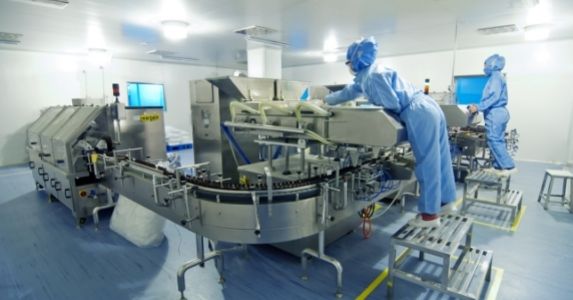Top Safety Risks in Pharmaceutical Manufacturing
Pharmaceutical manufacturers and their employees face genuine and significant health and safety concerns. In certain circumstances, the dangers are similar to those seen in other industries. In other cases, the risks are specific to those in the pharmaceutical industry. Pharmaceutical manufacturers use hazard controls and risk mitigations that are common in many industries. They can also use controls that are more specific to pharmaceutical manufacturing. Aside from the typical occupational safety and health concerns (trips and falls, improper equipment use, spills, etc.) pharmaceutical manufacturing involves hazards such as:
Flammable and Combustible Materials
The storage of flammable and combustible materials poses a fire risk in pharmaceutical facilities. Uncontrolled fires can quickly spread to other areas of a business, resulting in even more devastating secondary mishaps. As a result, appropriately addressing fire hazards in pharmaceutical operations is critical.
Hazardous Chemicals
Because of the heightened risk of fires, explosions, and the discharge of deadly poisons, chemical handling can be extremely hazardous. Hazardous chemical transportation, handling, and usage should all be care for safely as possible, with hazards being removed or decreased wherever possible. The Globally Harmonized System of Classification and Labeling of Chemicals (GHS), like Safety Data Sheets, may be used to identify and describe the risks associated with each chemical. GHS also emphasizes how to properly store, identify, and transport chemicals in order to reduce the risk of a dangerous incident or emergency.
Biological Hazards
When generating vaccines and treatments, some pharmaceutical workers and researchers work with bacteria, viruses, fungus, and other hazardous biological organisms. The risk of contracting infectious diseases increases when humans are exposed to these organisms. Containment is the most important safety element when dealing with biological hazards. The term "primary containment" refers to the process of erecting barriers against exposure. Wearing gloves and working in biological safety cabinets are two instances of primary containment. Environmental controls that protect workers from biological risks are referred to as secondary containment. Handwashing stations and the use of special ventilation systems are examples of secondary containment.
Carbon Monoxide Exposure
Carbon monoxide is a result of certain chemical reactions. Because of its ability to bind to iron, this odorless, colorless gas is harmful to humans. Carbon monoxide poisoning can result in weakness, dizziness, tiredness, vomiting, and death. Pharmaceutical companies should ensure that carbon monoxide detectors are installed in all laboratories. Caution signs should be placed on the doors if you're storing carbon monoxide in cylinders to notify other personnel to the presence of this gas in the lab.
UV Radiation
Radiant energy, which is transferred by electromagnetic waves, is required in some pharmaceutical operations. Vitamin D production, for example, involves the use of UV light. UV-A, UV-B, and UV-C are the three types of ultraviolet light. Although UV-A is the least dangerous, long-term exposure can cause cataracts in the eyes. UV-B exposure can also cause skin and eye burns. This form of radiant light has also been linked to an increased risk of skin cancer in some people. UV-C can also cause burns to the skin and eyes. Protection from UV light can be obtained by wearing goggles or face shields rated for UV protection, and gloves and a long-sleeved lab coat for skin protection.
Triumvirate provides Environmental Health and Safety training, safety, and pharmaceutical waste solutions that can help you improve the safety of your pharmaceutical manufacturing facility. We encourage you get in touch with us to see how we can support your pharmaceutical organization.






